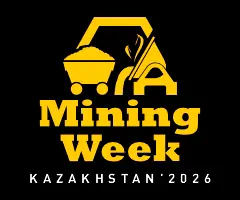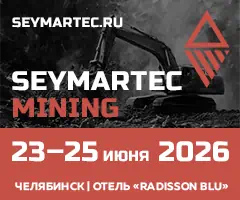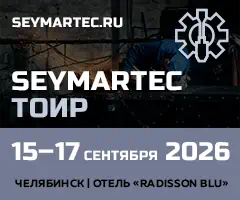Monitoring deformations of metro transit tunnels using a neural network approach
 A.D. Meller1, R.R. Galiyeva2, A.V. Kuleshova2, A.K. Petrosyan2, S.A. Glatko2
A.D. Meller1, R.R. Galiyeva2, A.V. Kuleshova2, A.K. Petrosyan2, S.A. Glatko2
1 RUDN University, Moscow, Russian Federation
2 National University of Science and Technology MISIS, Moscow, Russian Federation
Russian Mining Industry №2 / 2025 p.163-166
Abstract: The article discusses application of artificial neural networks and machine learning algorithms for monitoring of deformations in subway tunnels located in complex mining and geological conditions. Particular attention is given to industrial and environmental safety, as well as modern methods for measuring crustal deformations using GPS/GLONASS technologies, geodetic, and mine surveying. The main stages of artificial neural networks operation are described, i.e. the training based on the tunnel parameters and conditions, testing, validation, and operation to predict the potential deformations. The key neural network architectures are considered such as the deep, convolutional, and recurrent networks along with their data processing capabilities. Examples are provided of artificial neural networks used for data interpolation, hazardous zone recognition, and tunnel ring monitoring. The importance of high-quality initial data, including geometric parameters, physical material properties, climatic conditions, and historical data, is emphasized. Implementation of artificial neural networks can help to promptly identify risks, predict the deformation dynamics, and classify the deformation types, enabling timely measures to prevent emergencies.
Keywords: artificial neural networks, tunnel deformations, structural monitoring, machine learning, geodynamics, data interpolation
For citation: Meller A.D., Galiyeva R.R., Kuleshova A.V., Petrosyan A.K., Glatko S.A. Monitoring deformations of metro transit tunnels using a neural network approach. Russian Mining Industry. 2025;(2):163–166. (In Russ.) https://doi.org/10.30686/1609-9192-2025-2-163-166
Article info
Received: 06.01.2025
Revised: 05.03.2025
Accepted: 17.03.2025
Information about the authors
Alexander D. Meller – Postgraduate Student, Department of Subsoil Use and Oil and Gas Engineering, RUDN University, Moscow, Russian Federation; e-mail: This email address is being protected from spambots. You need JavaScript enabled to view it.
Rita R. Galiyeva – Postgraduate Student, Department of Energy-Efficient and Resource-Saving Industrial Technologies, National University of Science and Technology MISIS, Moscow, Russian Federation; e-mail: This email address is being protected from spambots. You need JavaScript enabled to view it.
Anastasia V. Kuleshova – Postgraduate Student, Department of Energy-Efficient and Resource-Saving Industrial Technologies, National University of Science and Technology MISIS, Moscow, Russian Federation; e-mail: This email address is being protected from spambots. You need JavaScript enabled to view it.
Artur K. Petrosyan – Postgraduate Student, Department of Energy-Efficient and Resource-Saving Industrial Technologies, National University of Science and Technology MISIS, Moscow, Russian Federation; e-mail: This email address is being protected from spambots. You need JavaScript enabled to view it.
Svetlana A. Glatko – Postgraduate Student, Department of Geology and Surveying, College of Mining, National University of Science and Technology MISIS, Moscow, Russian Federation; e-mail: This email address is being protected from spambots. You need JavaScript enabled to view it.
References
1. Manevich A.I., Losev I.V., Avdonina A.M., Shevchuk R.V., Kaftan V.I., Tatarinov V.N. Modeling the horizontal velocity field of the earth’s crust in a regular grid from GNSS measurements. Russian Journal of Earth Sciences. 2023;23(6):ES6002. https://doi.org/10.2205/2023es000885
2. Boubou R., Emeriault F., Kastner R. Artificial neural network application for the prediction of ground surface movements induced by shield tunnelling. Canadian Geotechnical Journal. 2010;47(11):1214–1233. https://doi.org/10.1139/t10-023
3. Grishchenkova E.N. Development of a neural network for earth surface deformation prediction. Geotechnical and Geological Engineering. 2018;36:1953–1957. https://doi.org/10.1007/s10706-017-0438-y
4. Татаринов В.Н., Маневич А.И., Лосев И.В. Системный подход к геодинамическому районированию на основе искусственных нейронных сетей. Горные науки и технологии. 2018;(3):14–25. https://doi.org/10.17073/2500-0632-2018-3-14-25 Tatarinov V.N., Manevich A.I., Losev I.V. A system approach to geodynamic zoning based on artificial neural networks. Mining Science and Technology (Russia). 2018;(3):14–25. (In Russ.) https://doi.org/10.17073/2500-0632-2018-3-14-25
5. Замараев Р.Ю., Гречишкин П.В., Гиниятуллина О.Л. Повышение оперативности прогноза сейсмической активности при отработке запасов угля на шахтах с применением алгоритмов нейронных сетей. Горная промышленность. 2024;(3S):57–62. https://doi.org/10.30686/1609-9192-2024-3S-57-62 Zamaraev R.Y., Grechishkin P.V., Giniyatullina O.L. Improving the efficiency of forecasting seismic activity during mining of coal reserves in mines using neural network algorithms. Russian Mining Industry. 2024;(3S):57–62. (In Russ.) https://doi.org/10.30686/1609-9192-2024-3S-57-62
6. Suwansawat S., Einstein H.H. Artificial neural networks for predicting the maximum surface settlement caused by EPB shield tunneling. Tunnelling and Underground Space Technology. 2006;21(2):133–150. https://doi.org/10.1016/j.tust.2005.06.007
7. Yoo C., Kim J.-M. Tunneling performance prediction using an integrated GIS and neural network. Computers and Geotechnics. 2007;34(1):19–30. https://doi.org/10.1016/j.compgeo.2006.08.007
8. Kasper T., Meschke G. A numerical study of the effect of soil and grout material properties and cover depth in shield tunnelling. Computers and Geotechnics. 2006;33(4-5):234–247. https://doi.org/10.1016/j.compgeo.2006.04.004
9. Kasper T., Meschke G. On the influence of face pressure, grouting pressure and TBM design in soft ground tunnelling. Tunnelling and Underground Space Technology. 2006;21(2):160–171. https://doi.org/10.1016/j.tust.2005.06.006
10. Kim C.Y., Bae G.J., Hong S.W., Park C.H., Moon H.K., Shin H.S. Neural network based prediction of ground surface settlements due to tunnelling. Computers and Geotechnics. 2001;28(6-7):517–547. https://doi.org/10.1016/S0266-352X(01)00011-8
11. Великанов В.С., Дремин А.В., Чернухин С.А., Ломовцева Н.В. Технологии нейронных сетей в интеллектуальном анализе данных гранулометрического состава взорванных пород. Горная промышленность. 2024;(4):90–94. https://doi.org/10.30686/1609-9192-2024-4-90-94 Velikanov V.S., Dremin A.V., Chernukhin S.A., Lomovtseva N.V. Neural network technologies in mining data on particle size distribution of muck pile rocks. Russian Mining Industry. 2024;(4):90–94. (In Russ.) https://doi.org/10.30686/1609-9192-2024-4-90-94
12. Javadi A.A. Estimation of air losses in compressed air tunneling using neural network. Tunnelling and Underground Space Technology. 2006;21(1):9–20. https://doi.org/10.1016/j.tust.2005.04.007




